Quick Airline Information:
✈Airline IATA* code: TK
✈Airline ICAO* code: THY ✈Founded: 20 May 1933 ✈Website: www.turkishairlines.com✈Alliance: Star Alliance ✈History
✈Operations and Destinations 🌍
✈Fleet ✈️
✈Photo Slide 📷✈Safety Video 🎬
✈Airline reviews ⭐
*IATA: (International Air Transport Association)
*ICAO: (International Civil Aviation Organization)
History Menu:
Turkish Airlines was established on 20 May 1933 as State Airlines Administration. The initial fleet consisted of two five-seat Curtiss Kingbirds, two four-seat Junkers F.13s and one ten-seat Tupolev ANT-9. In 1935, the airline was turned over to the Ministry of Public Works and was subsequently renamed General Directorate of State Airlines. Three years later, in 1938, it became part of the Ministry of Transportation.
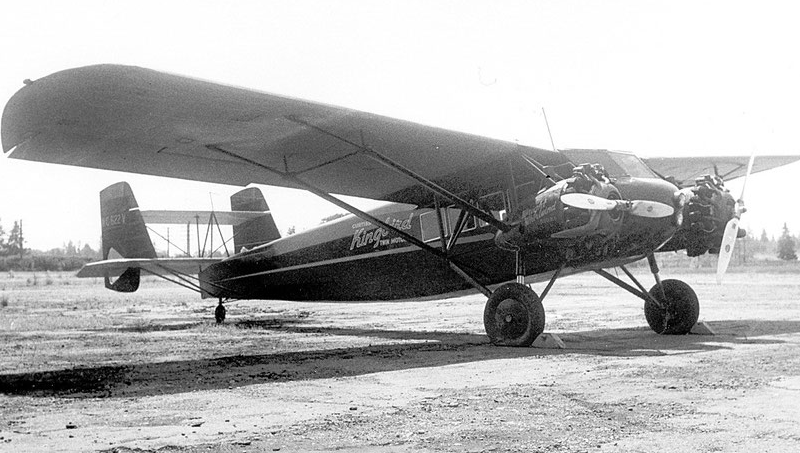
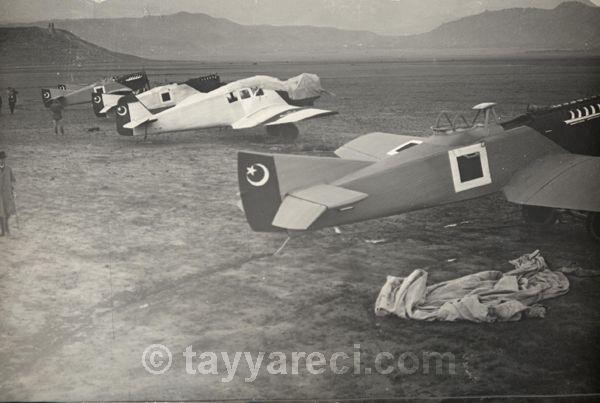
.jpg)
Several Douglas DC-3s and Douglas C-47s were phased in during 1945. Being initially set up as a domestic carrier, the airline commenced international services with the inauguration of Ankara–Istanbul–Athens flights in 1947; the DC-3s and the C-47s enabled the carrier to expand its network. Nicosia, Beirut and Cairo were soon added to the airline's international flight destinations. However, domestic services remained the carrier's primary focus until the early 1960s.
In 1956, the Turkish government reorganized the airline under the name Türk Hava Yolları (often abbreviated as THY). The airline joined the International Air Transport Association (IATA) shortly thereafter.
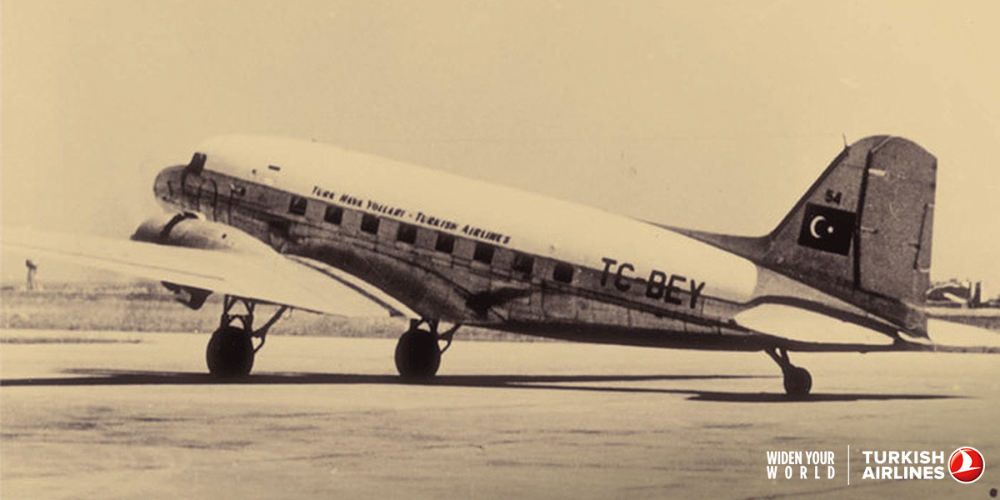
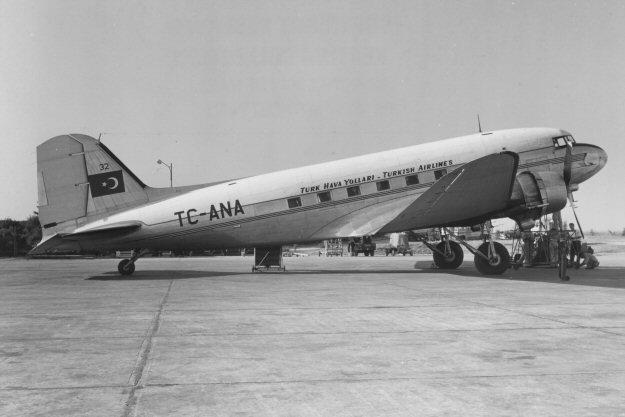
In 1957, British Overseas Airways Corporation (BOAC) began supplying technical support after acquiring a 6.5 percent shareholding, which it held for about 20 years. New aircraft including Vickers Viscounts, Fokker F27s and Douglas DC-3s were added to the fleet in the late 1950s and early 1960s.
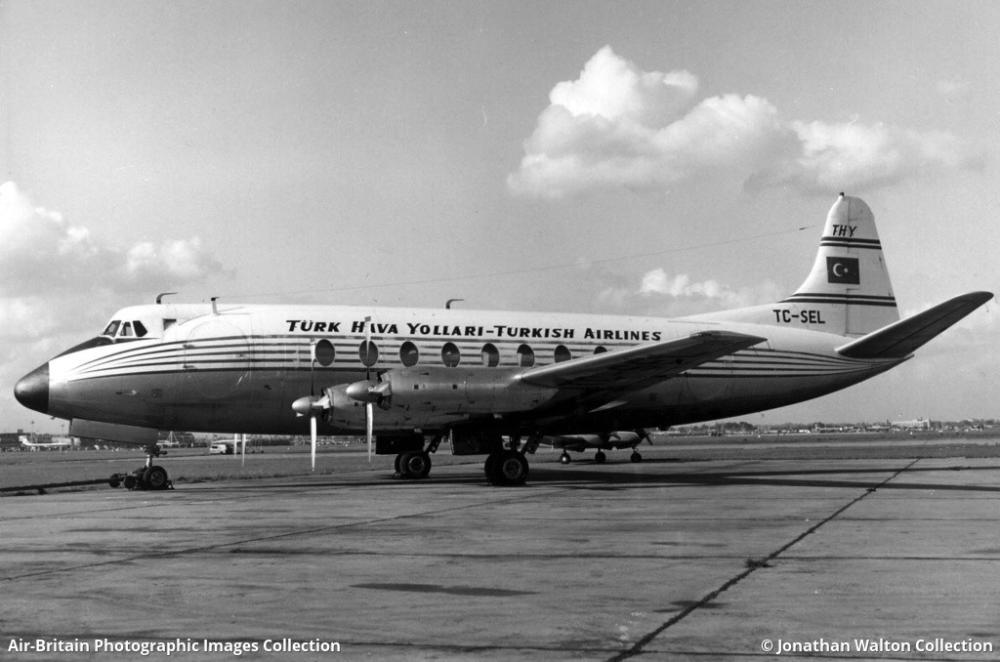
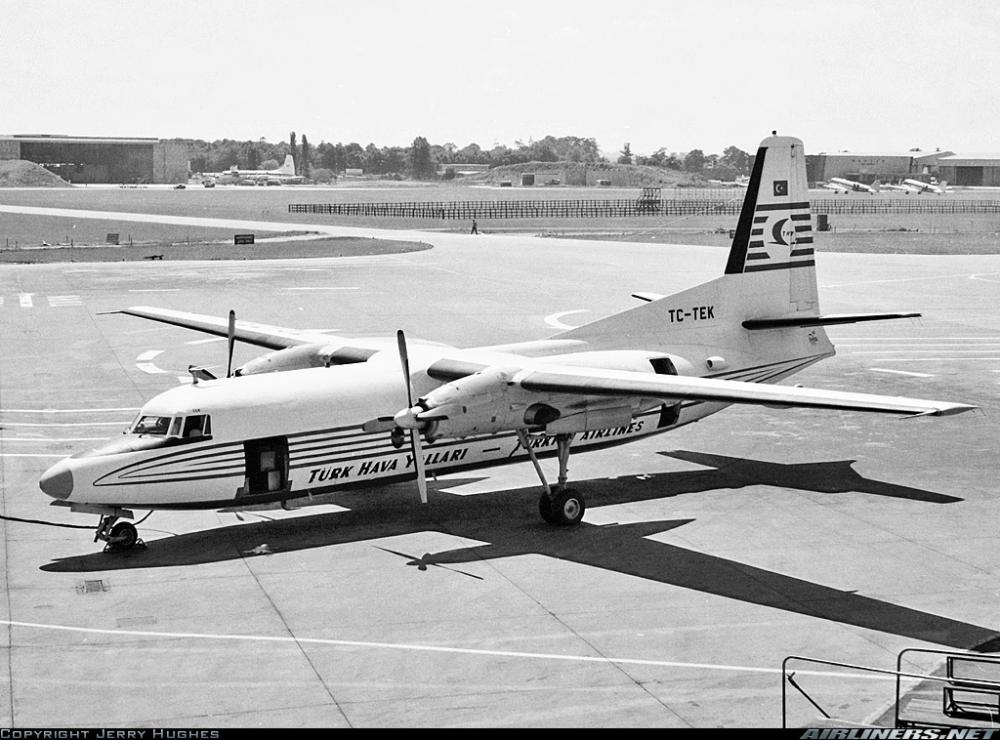
Turkish Airlines began operating their first jet, a McDonnell Douglas DC-9, in 1967. This was followed by the addition of three Boeing 707 jets in 1971. Other aircraft operated in the early 1970s included the McDonnell Douglas DC-10 and the Fokker F28 which were put into service in 1972 and 1973 respectively. It also introduced 4 Boeing 727-200 in 1994 to operate routes to Europe, The Middle East and Africa. In 1978 new routes to Baghdad, Tehran, and Tripoli began.
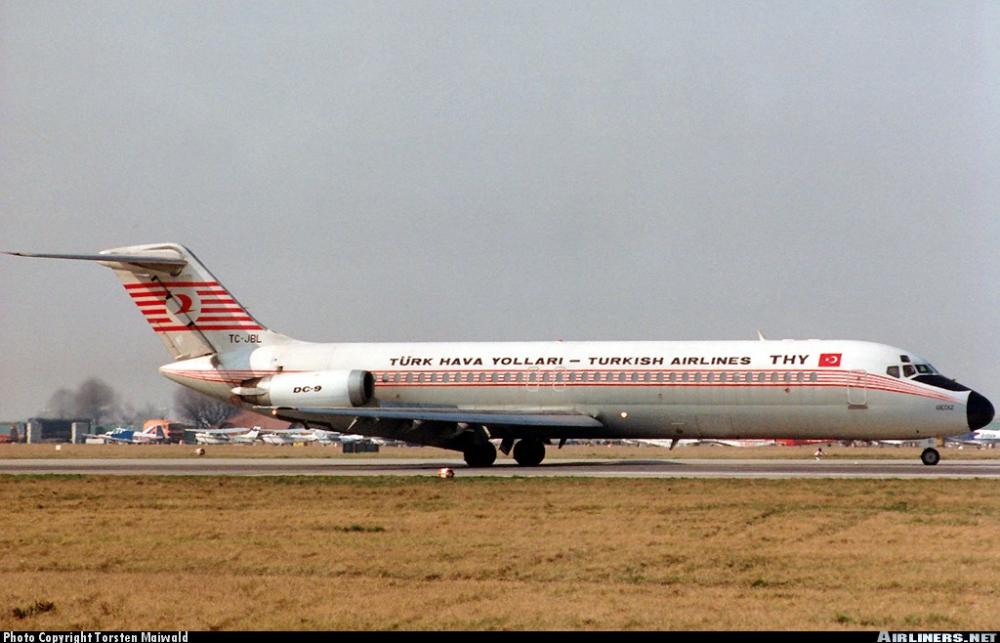

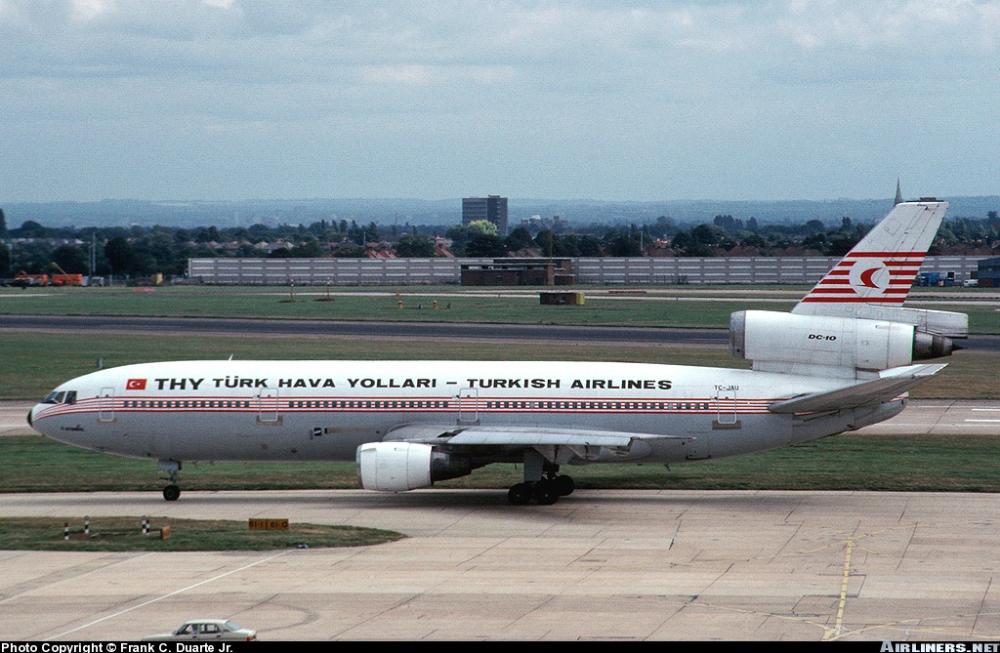
The airline was plagued by several issues in the 1980s and 90s. It developed a reputation for poor customer service and delays. It also endured hijackings and suffered seven accidents between 1974 and 1983.
Luckily for the airline, a new government came to power in 1983 which recognized THY's importance as Turkey's gateway to the world, beginning the airline's makeover into a modern operation. (It would go on to maintain one of the youngest fleets in the world). THY built a new, state-of-the-art technical centre at Yeşilköy Airport in 1984. The airline was capable of both light and heavy maintenance on a number of different aircraft types.
By the mid-1980s, THY had a fleet of 30 aircraft, flying to 16 domestic destinations and 36 international. Turkish Airlines began operating Airbus A310s in 1985, allowing the addition of flights to Singapore in 1986. A route to New York City via Brussels was added in 1988. It was at this time, in 1985 that the airline began to roll out a First Class service to all destinations, starting with London and Jeddah. Three A310-300s were added to the fleet in 1988. Routes to Helsinki, Tunis, Algeria, Oslo, Basel, and New York were opened that year also.
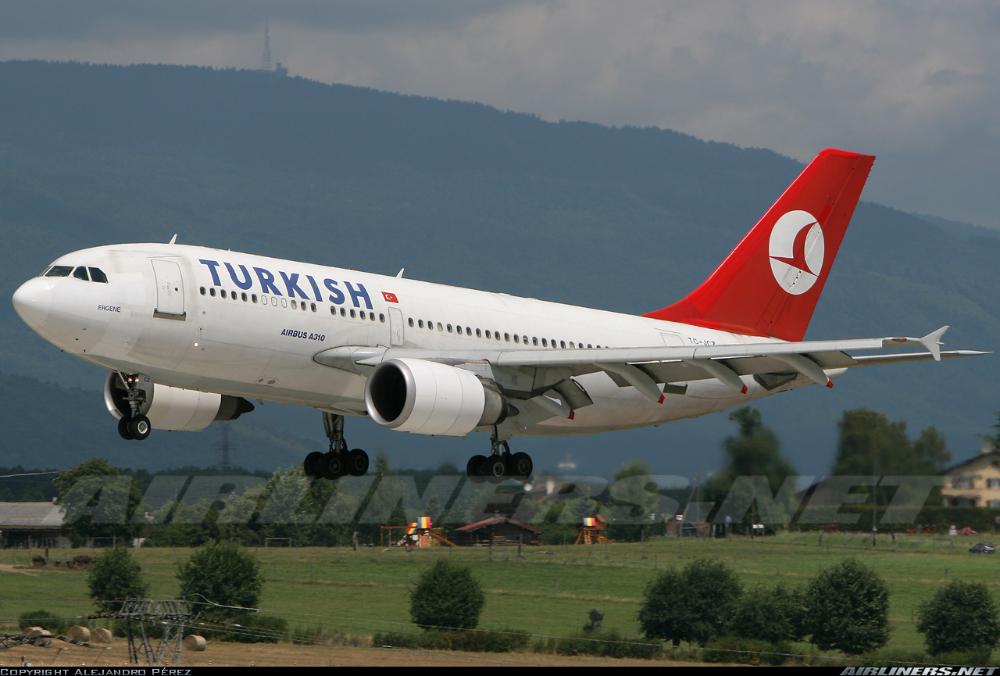
In 1991 it introduced the Boeing B737 aircraft into the fleet, to operate domestic routes, the fleet was refurbished both inside and out, including a new aircraft livery. Simultaneously, the uniforms worn by the flight crew and ground personnel were updated. A total of 8 new aircraft; 6 B737-400s and 2 B737-500s joined the fleet also. In 1993, the fleet was rejuvenated, reducing the average aircraft age to 6.2 years old. A-340-300 and RJ-100 aircraft were added to the fleet. Later more Boeing 737s and 2 Airbus 340-300s joined also in 1993. The addition of Airbus 340s started direct flights to Tokyo and also a 3-tier service with First Class, Business Class, and Economy Class.
However with an eye on further expansion the company suffered in the global aviation crisis following the Persian Gulf War and would not break even again until 1994. However, business was again booming in the mid-1990s, with the greatest growth coming from North American destinations. THY launched a nonstop flight to New York City in July 1994. The domestic market was deregulated in 1996, allowing new scheduled competition from charter airlines. At the same time, larger international carriers were providing stiff competition on routes to Western Europe. THY entered into marketing agreements with other international airlines to enhance their competitiveness. In 1995 three B737-400s, two RJ-100s, seven B737-400s, and three RJ-100s were added to the fleet.
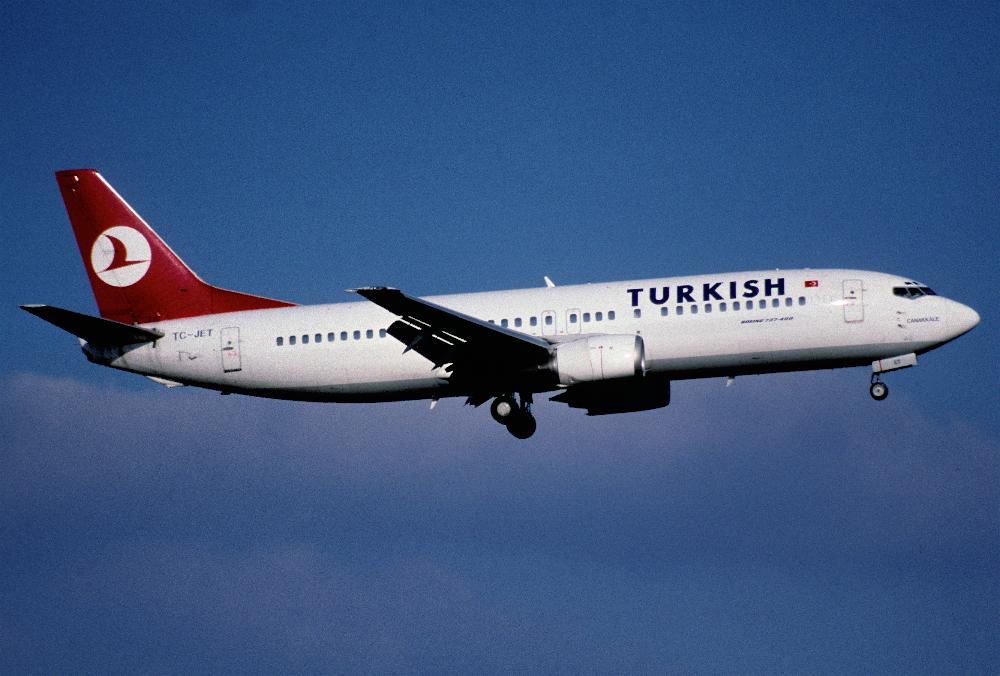
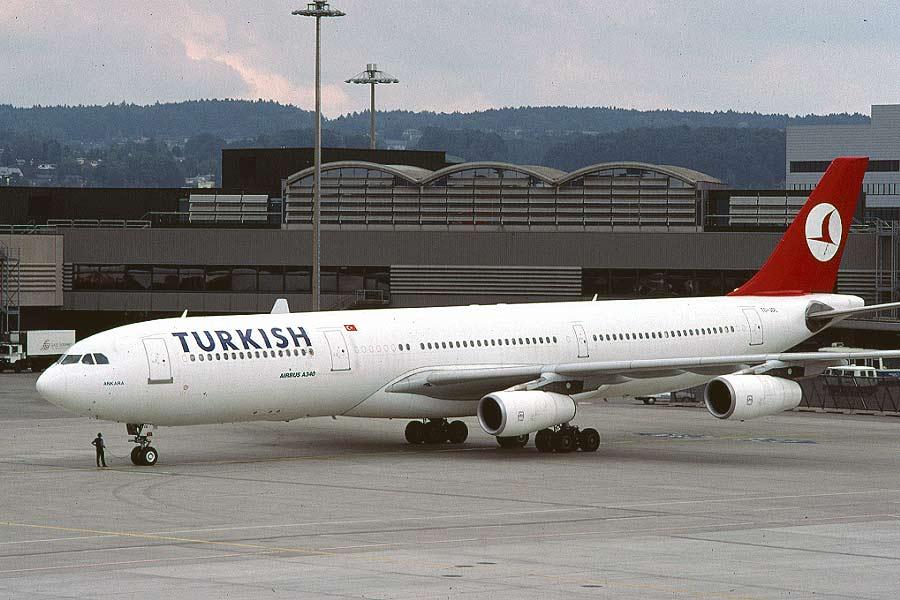
.jpg)
The company teamed with Japan Airlines to offer service to Osaka and Tokyo in 1997 and 1998. Other jointly operated flights soon followed with Austrian Airlines, Swissair, and Croatia Airlines. In 1998 six new generation B-737-800 aircraft were added to the fleet, soon after the airline realised the potential of the airframe and ordered over 100 examples to be delivered over the next decade.
A new terminal opened in January 2000 at Istanbul's Istanbul Atatürk Airport. Turkish Airlines continued to extend their international reach, forging marketing agreements with Asiana Airlines, American Airlines, Malaysia Airlines, LOT Polish Airlines, Czech Airlines and Cathay Pacific in 2000. Turkey underwent an economic crisis throughout most of 2001, leading to a reduction in traffic on domestic routes in particular. THY managed to survive after the September 11 attacks in the United States without a government bailout or mass layoffs. In 2003, the war in Iraq prompted Turkish Airlines to close some routes in the Persian Gulf, while flights to Asia were suspended during the SARS epidemic.
However, the airline soon recovered, increasing traffic on existing routes and adding service to Delhi after an 11-year lapse. Another fleet expansion program kicked off in 2004, helping THY maintain one of the youngest fleets in Europe. In July that year, the airline announced a massive order of 36 jets from Airbus, plus an order for 15 Boeing 737s. THY was not just ordering new planes. It was planning to spend on a new technical and training facility at Istanbul's underutilized Sabiha Gökçen International Airport. The airline faced the entry of new competitors into the liberalizing Turkish aviation market. However, tourism was booming. Although the company was publicly traded at this time, the government owned 98% of its shares. The privatization program was revived in 2004 with a public offering of 20% of shares on the Istanbul Stock Exchange.
In 2005 another large order followed, the largest in the history of Turkish Airlines, for Fifty-nine new aircraft consisting of 36 Airbus A-330-200, A-321-200, and A-320-200 aircraft, and 23 B-737-800s from Boeing. Also the airline begun a dramatic expansion plan, that year alone it opened 23 new international routes. The first 3 of the 59 aircraft ordered from Airbus and Boeing arrived, the new generation Boeing 737-800, an Airbus A320, and Turkey’s first Airbus A330. In July 2006, Turkish first Airbus A321 (TC-JRA) also arrived, which it later painted in the Star Alliance livery.
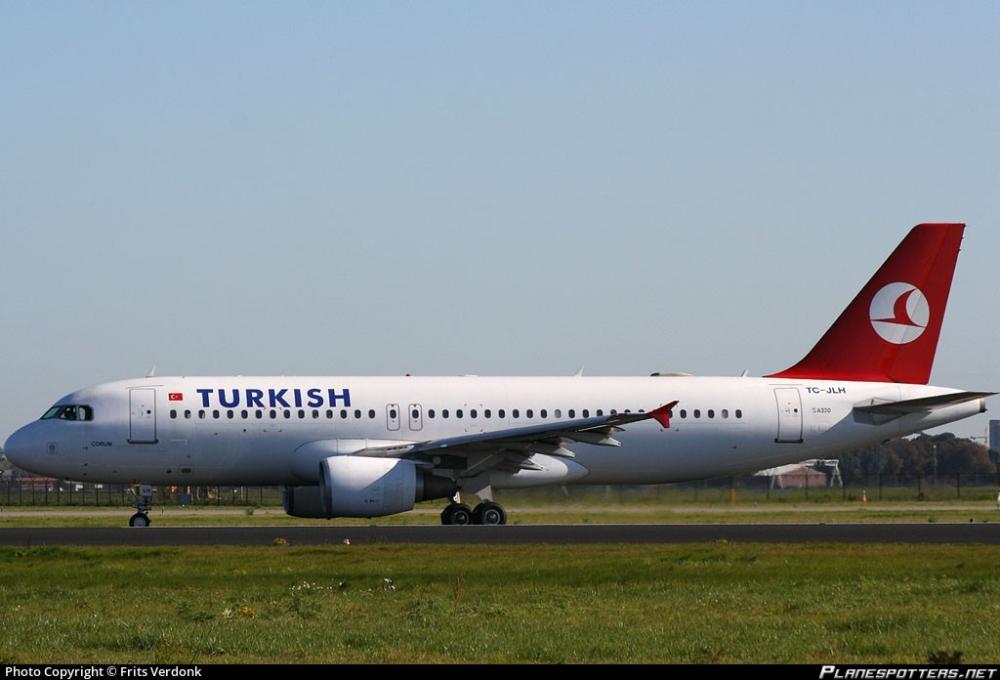
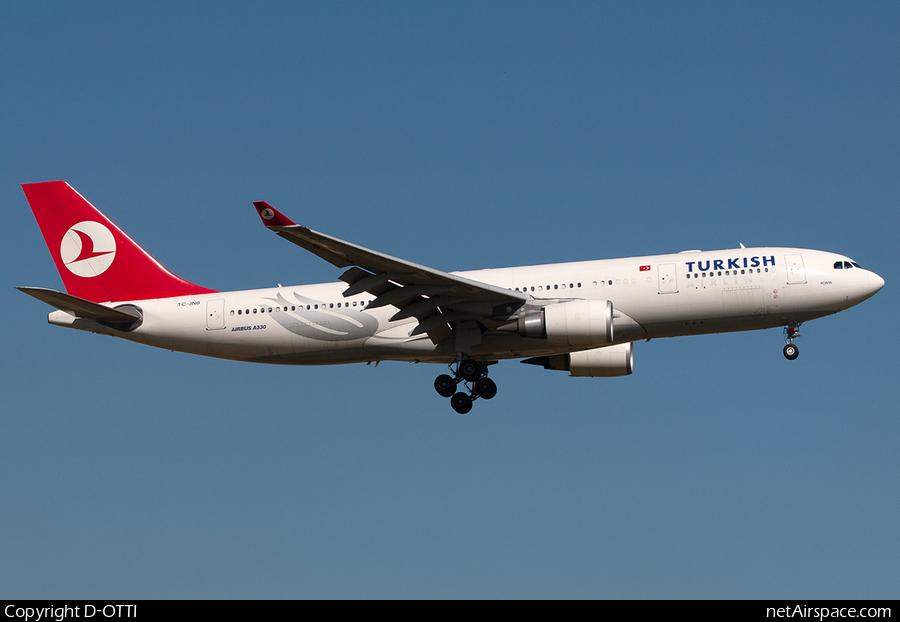
On 1 April 2008, Turkish Airlines joined the Star Alliance after an 18-month integration process. In 2009 new routes went into service, flying to Uşak, Çanakkale, Ufa, Mashhad, Dakar, Sao Paolo, Benghazi, Gothenburg, Toronto, Lviv, and Jakarta.
In April 2010, TURKISH replaced TURKAIR as the new call sign for Turkish Airlines. New domestic and global routes were opened from the turn of the new decade,Dar es Salaam and Entebbe, Sochi, Accra, Washington, D.C amongst many more. Turkish Airline set it's target to fly to over 200 destinations worldwide and become one of the leading airlines in the world, and at the same time, make Istanbul Ataturk Airport into a major continental transit hub.
New aircraft like the Airbus A330-300 arrived in October 2010 to cope with the expansion as well as it started leasing Boeing 777-300 from Jet Airways till it's pre-owned aircraft arrived later in October 2010. More routes opened to Guangzhou, Shiraz, Valencia, Erbil, Toulouse, Malaga, Genoa, Basra, Thessaloniki, Naples, Najaf, Kabul, Sulaymaniyah, Islamabad, and Turin in 2011. It continued to take delivery as well as many more Airbus A321, which become the backbone of the European fleet, operating up to 69 examples.
Also in December 2011, the Turkish government unveiled plans to modernize the Aden Adde International Airport in Mogadishu, Somalia. In March 2012, Turkish Airlines became the first international carrier to resume flights to Somalia since the start of that country's civil war in the early 1990s. In 2012 it launched new routes to some of the countries which no other airline would dare to fly to, flying to Irak, Somalia or Afghanistan for example. By the end of 2013, Turkish Airlines had increased their number of flight points to 241 destinations worldwide (199 international and 42 domestic).
In 2013, the airline won the distinction to became the airlines that flies to the most countries and destinations in the world. The airline embarked on a global campaign and marketing strategy which made planes wear liveries of football and basketball teams and the airline was the official sponsor for many sporting events, giving it international brand recognition. The lounge at Istanbul Ataturk was upgraded for it's frequent travellers and this also won "best Lounge Awards". It also introduced a service called "Tourİstanbul" for passengers in transit and with time to visit the city.
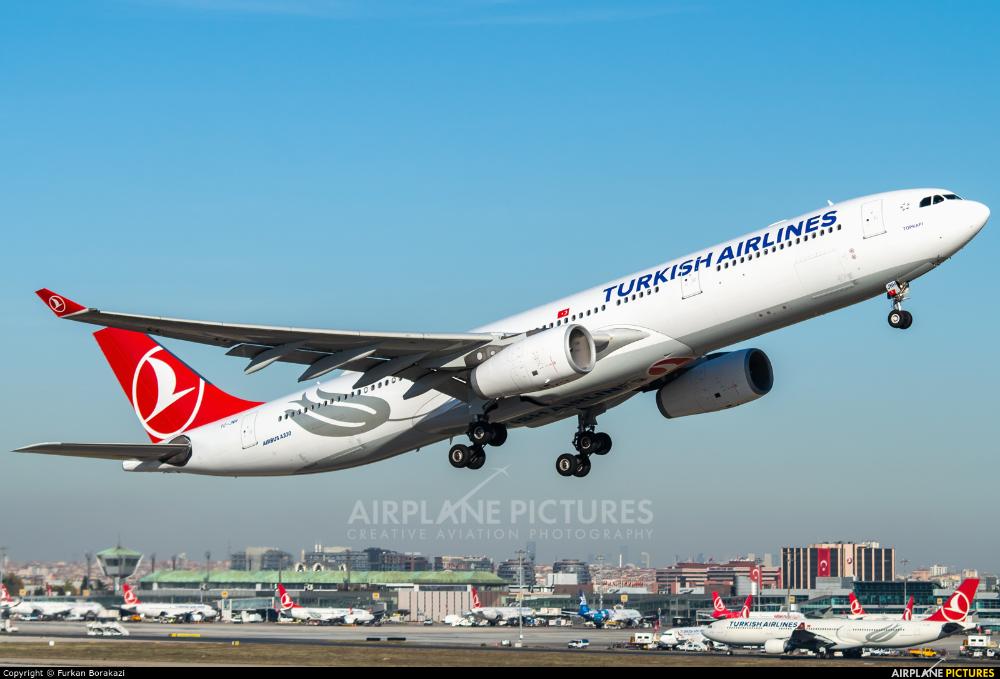
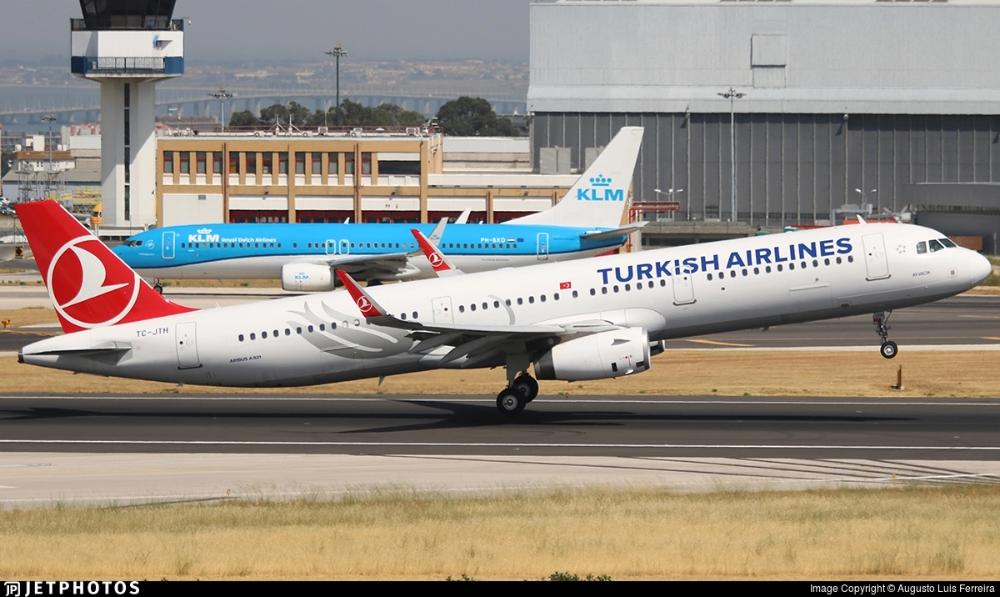
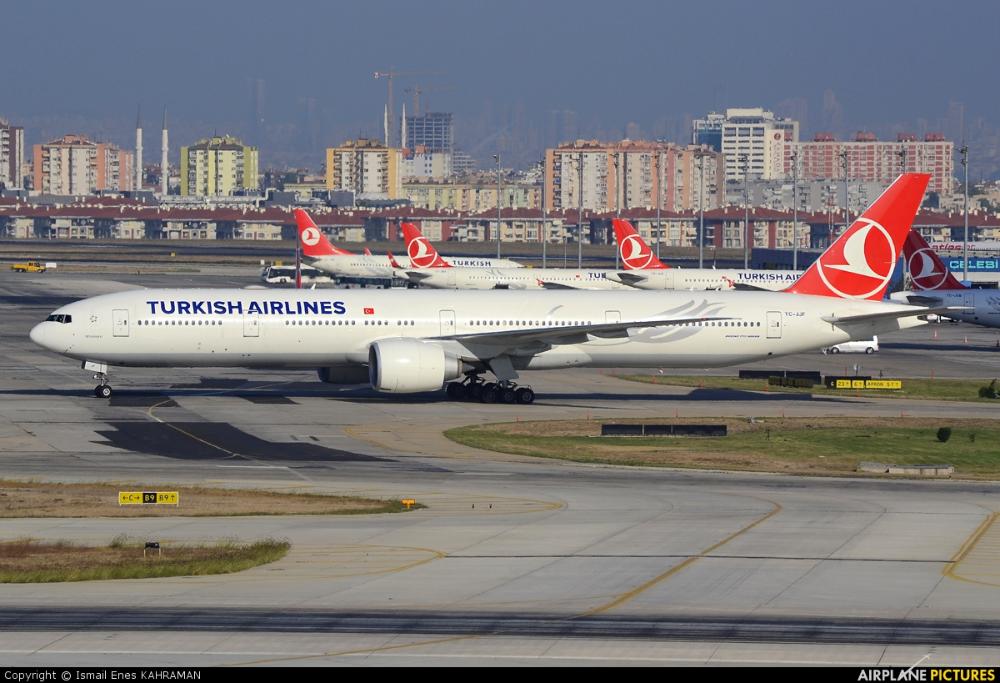
In August 2016, Turkish Airlines announced a profit collapse, the airline announced significant reductions in operations for the upcoming 2016/2017 schedule period with frequency cuts to 45 European and 13 intercontinental routes. Despite it, it added Bogota, Panama, Dubrovnik, Atlanta, Kosice, Hanoi, Cluj, Victoria, Zanzibar, Havana, and Caracas to its worldwide map.
Turkish Airlines took delivery of the first next generation Airbus A321Neo aircraft in July 2018, it went on to service popular European routes and middle eastern destinations. The aircraft incorporate the latest additions in comfort, connectivity, IFE and safety features, making the airline's fleet one of the youngest of the world. It holds over 90 orders for the Airbus variant plus another 25 orders for the Airbus A350-900, for the long haul replacement aircraft program, with first deliveries expected in 2020.
The same year in August it also received the latest aircraft from Boeing, the 737 Max8 which it hopes to operate over 60 examples plus 10 planes of the Max-9 version, taking delivery of all of them up to 2022 (on hold). It also holds orders for an additional Boeing 787-9 Dreamliners all of which started to arrive between 2019 and 2023. Also during 2018 Turkish Airlines updated its logo to a simplified bold black brand with the iconic red circle still featuring the classic flying bird. It also introduced a new uniform design and colours which will see it introduced by the crew along 2019.
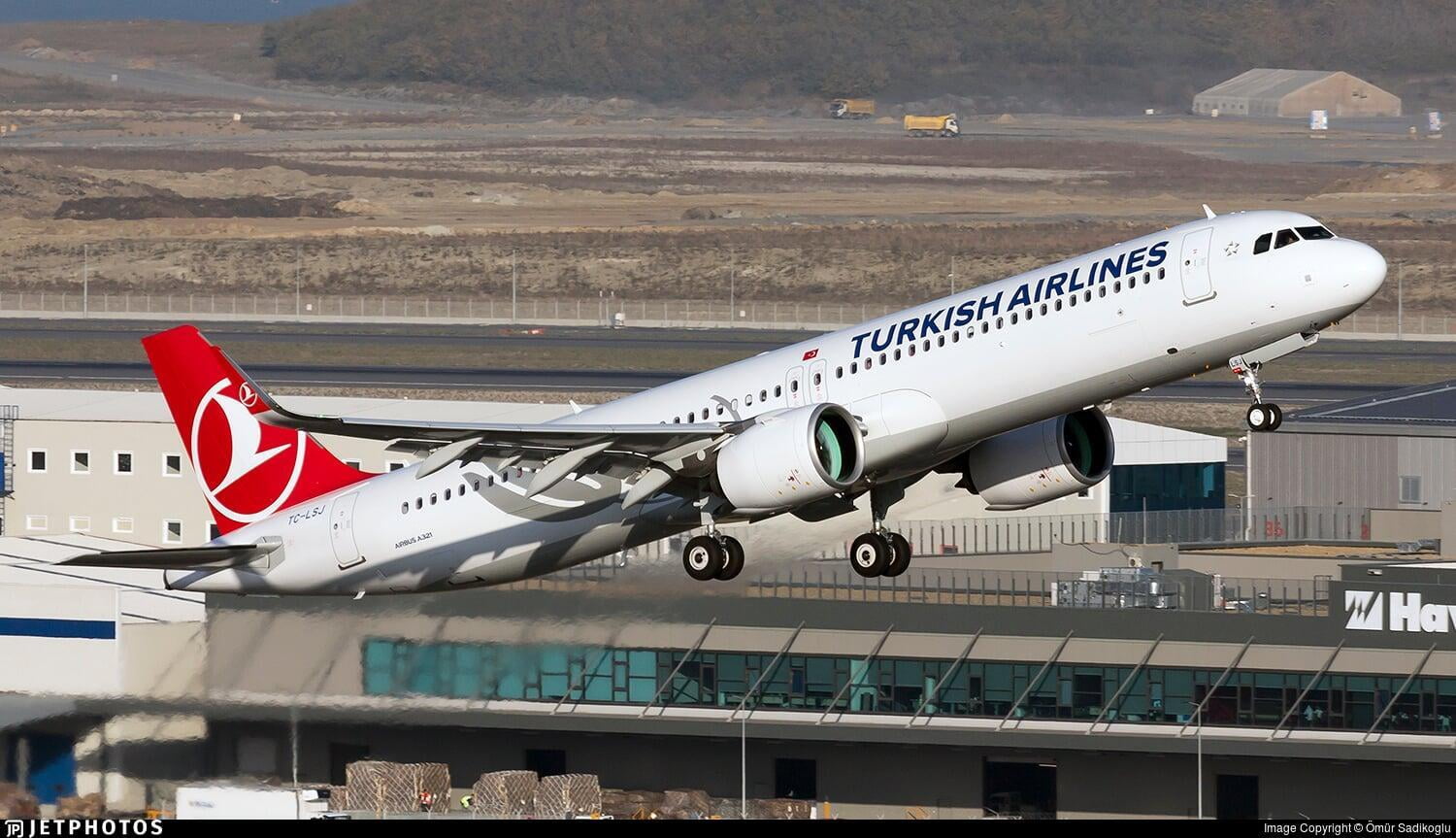
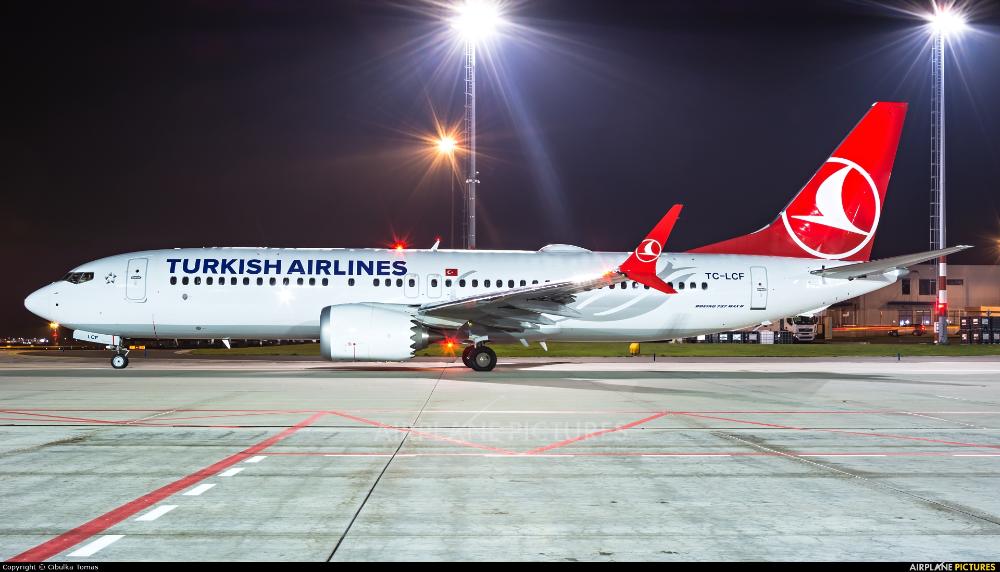
On 6th April 2019, Turkish Airlines undertook the biggest ever hub move in civil aviation history as Turkey’s flag carrier switched to the new Istanbul International Airport from its existing home base at Ataturk airport. Two days were set aside for all airlines to shift from Ataturk to the new airport 40km away. According to an announcement, at the new airport, Turkish Airlines will be able to increase its network extension capacity and opportunities for new routes and timings with more slots available, allowing growth for both passenger and cargo transportation.
In June 2019, Turkish Airlines received its first Boeing 787-9 in June 2019 out of an order of 25 examples.
History source: Wikipedia.org + Turkishairlines.com + airfleets.net
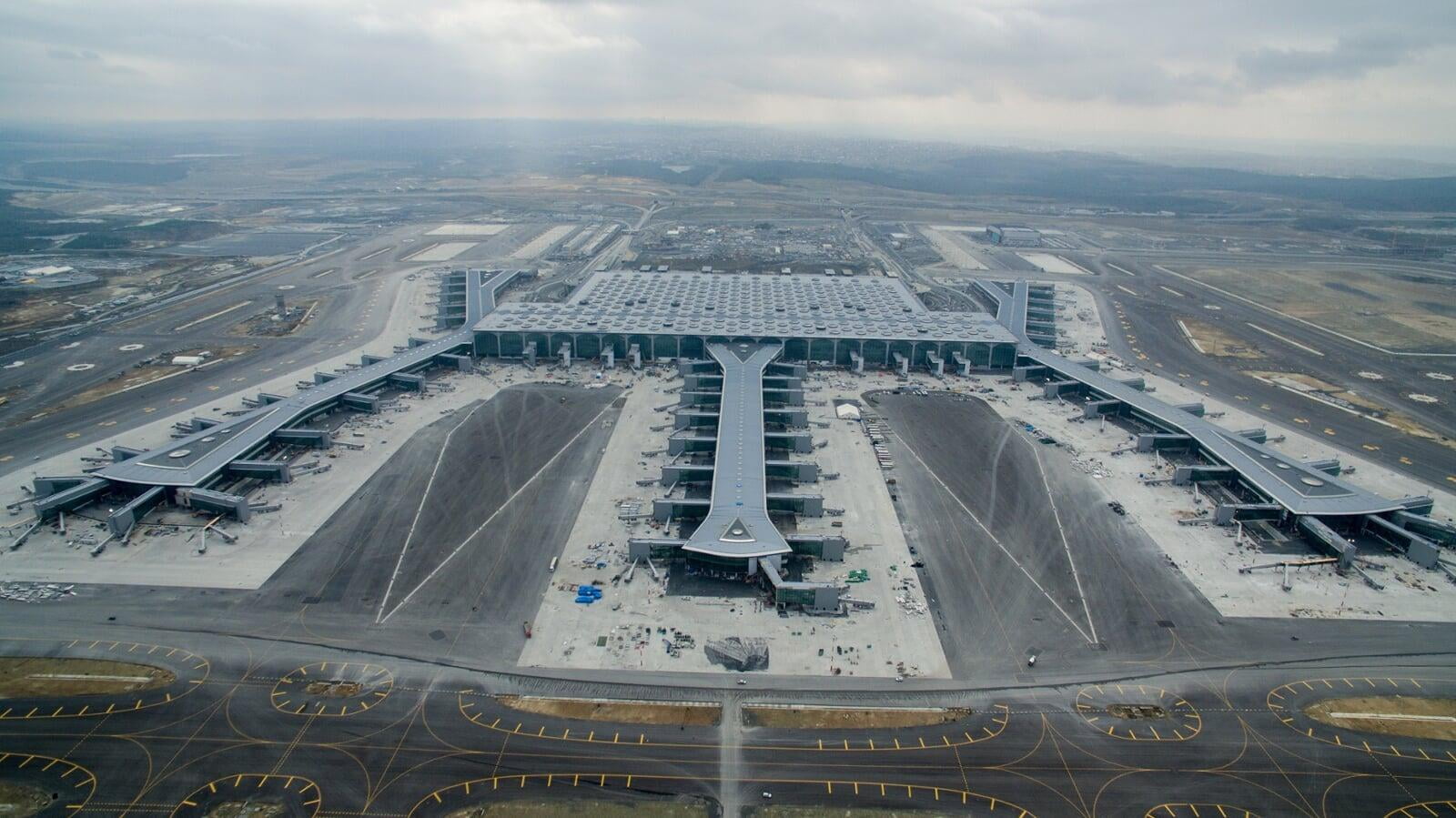
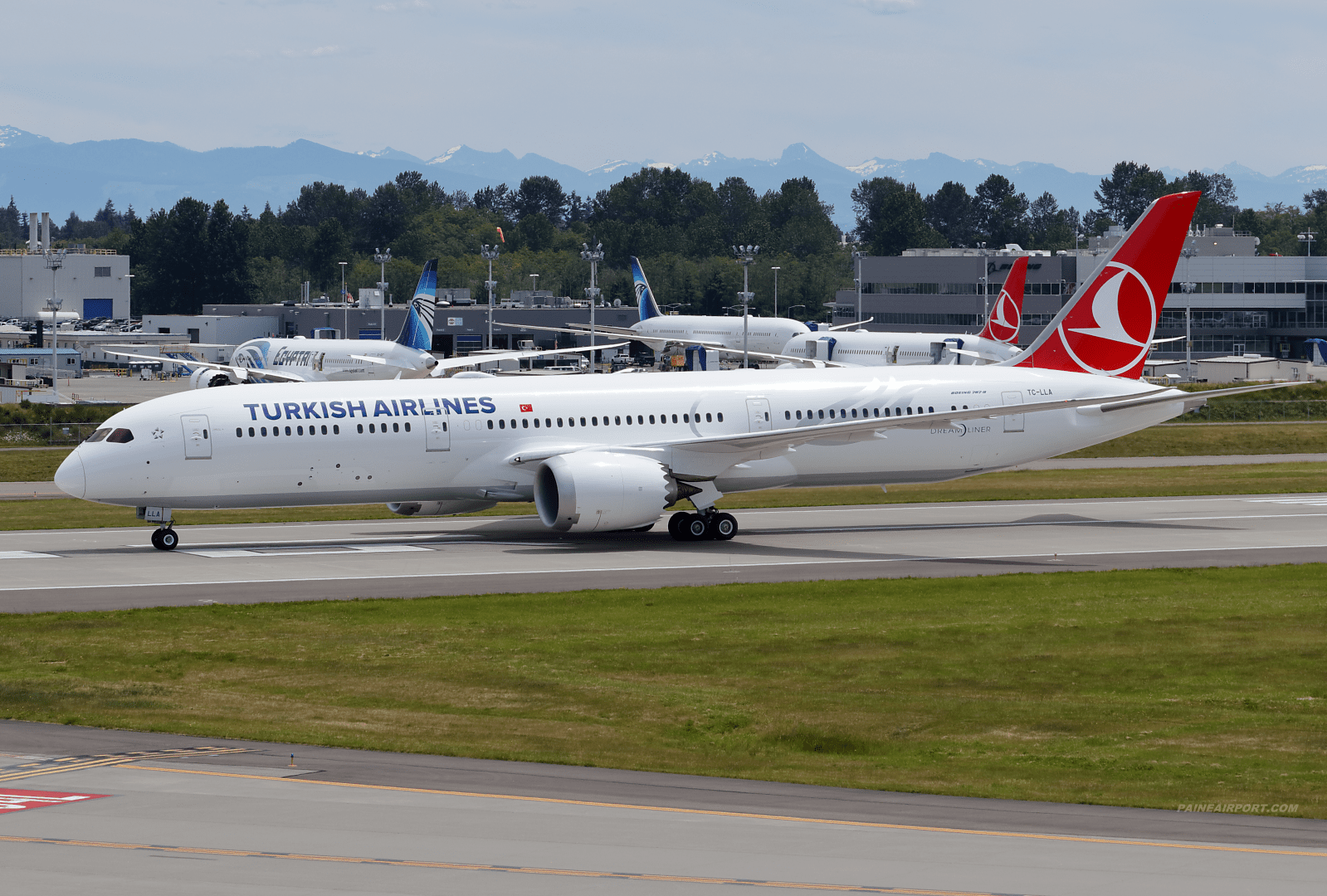
Operations and Destinations 🌍:
Turkish Airlines flies to more destinations that any other airline in the world, and it prides itself to to be the only airline to serve certain destinations in The Middle East or Africa, which are not served by any other airline.(due to political conflicts or wars). It currently flies to 304 destinations in 122 countries around the world, including 48 domestic destinations within Turkey. In the last decade, the airline has grown dramatically to position itself as one of the major players in the aviation market and offers a wide range of connections and services from its central hub, at Istanbul International Airport.
From 2019, the airline is gradually transferring its services from Istanbul Ataturk Airport to the new Istanbul International Airport, located north of Istanbul which will be one of the biggest airports in the world to be able to meet the growth of Turkish Airlines and make connections easier and faster than the current hub. The airline also has additional hubs at Istanbul Sabiha Gökçen Airport and Ankara Esenboğa Airport.
Turkish Airlines is a full service airline, and offers meals and luggage included on all its international flights.
Turkish Airlines flies to the following destinations*:
| Region 🗺️ | Destinations 🌍🌎🌏 |
|---|---|
| ✈Turkey (domestic) | Adana, Adıyaman, Ağrı, Alanya, Ankara, Antalya, Batman, Bingöl, Bodrum, Bursa, Çanakkale, Dalaman, Denizli, Diyarbakır, Edremit, Elazığ, Erzincan, Erzurum, Gaziantep, Hakkâri, Hatay, Isparta, Istanbul (IST, SAW), İzmir, Izmit, Iğdır, Kahramanmaraş, Kars, Kastamonu, Kayseri, Konya, Kütahya, Malatya, Mardin, Merzifon, Muş, Nevşehir, Ordu, Giresun, Samsun, Şanlıurfa, Sinop, Sivas, Şırnak, Tekirdağ, Trabzon, Uşak, Van |
| ✈ Europe | Amsterdam, Athens, Barcelona, Bari, Basel, Batumi, Belgrade, Berlin, Bilbao, Billund, Birmingham, Bologna, Bordeaux, Bremen, Brussels, Bucharest, Budapest, Catania, Chișinău, Cluj-Napoca, Cologne, Bonn, Constanța, Copenhagen, Dnipro, Dublin, Dubrovnik, Düsseldorf, Edinburgh, Frankfurt, Friedrichshafen, Geneva, Gothenburg, Graz, Hamburg, Hannover, Helsinki, Karlsruhe, Baden-Baden, Kharkiv, Kherson, Kiev, Košice, Leipzig, Linz, Lisbon, Ljubljana, London (LHR, LGW, STN), Luxembourg City, Lviv, Lyon, Madrid, Málaga, Manchester, Marseille, Milan, Munich, Münster, Osnabrück, Naples, Nice, North Nicosia, Nuremberg, Odessa, Oslo, Paris (CDG), Pisa, Podgorica, Porto, Prague, Pristina, Riga, Rome, Rovaniemi, Salzburg, Sarajevo, Skopje, Sofia, Stockholm, Stuttgart, Tallinn, Tbilisi, Thessaloniki, Tirana, Toulouse, Turin, Valencia, Valletta, Varna, Venice, Vienna, Vilnius, Warsaw, Zagreb, Zaporizhia, Zürich |
| ✈The Middle East | Abu Dhabi, Ahvaz, Amman, Aqaba, Baghdad, Basra, Beirut, Dammam, Doha, Dubai, Erbil, Gassim, Isfahan, Jeddah, Kabul, Kuwait City, Manama, Mashhad, Mazar-i-Sharif, Medina, Muscat, Najaf, Riyadh, Sharjah, Shiraz, Tabriz, Ta'if, Tehran, Tel Aviv, Yanbu |
| ✈Russia and the CIS | Russia: Kazan, Krasnodar, Moscow, Rostov-on-Don, Saint Petersburg, Samara, Sochi, Ufa, Voronezh, Yekaterinburg CIS: Almaty, Ashgabat, Astana, Baku, Bishkek, Dushanbe, Ganja, Minsk, Nakhchivan, Samarkand, Tashkent |
| ✈Africa | Abidjan, Abuja, Accra, Addis Ababa, Alexandria, Algiers, Antananarivo, Asmara, Bamako, Banjul, Cairo, Cape Town, Casablanca, Conakry, Constantine, Cotonou, Dakar, Dar es Salaam, Djibouti City, Douala, Durban, Entebbe, Freetown, Hurghada, Johannesburg, Khartoum, Kigali, Kilimanjaro, Kinshasa, Lagos, Libreville, Lusaka, Luxor, Maputo, Marrakesh, Mogadishu, Mombasa, Moroni, Nairobi, N'Djamena, Niamey, Nouakchott, Oran, Ouagadougou, Port Sudan, Sharm El Sheikh, Tunis, Yaoundé, Zanzibar |
| ✈Asia | Bangkok, Beijing, Delhi, Colombo, Denpasar (Bali), Dhaka, Guangzhou, Hanoi, Ho Chi Minh City, Hong Kong, Islamabad, Jakarta, Karachi, Kathmandu, Kuala Lumpur, Lahore, Mahé, Malé, Manila, Mumbai, Phuket, Port Louis, Seoul, Shanghai, Singapore, Taipei, Tokyo (NRT), Ulaanbaatar |
| ✈North America | Atlanta, Boston, Chicago, Houston, Los Angeles, Miami, New York City, San Francisco, Washington, D.C., Montreal, Toronto |
| ✈Central and South America | Bogotá, Buenos Aires, Cancún, Caracas, Havana, Mexico City, Panama City, São Paulo |
*Destination list is for reference only. Please check directly with the airline for updates.
*Note some destinations are only seasonal.*Correct info as of Jan 2019.
Fleet ✈️:
With a wide range of destinations it's to no surprise that the airline has also one of the biggest fleets in Europe. It deploys simultaneously Airbus and Boeing aircraft on all its routes. The airline uses narrow or widebody aircraft for its domestic and medium haul network depending on the time of year, demand or availability of the aircraft. The fleet of Turkish Airlines consists of over 300 aircraft, and there are orders for over 200 new aircraft, including A350-900s and B787-9s due to begin their deliveries from 2019.
The fleet* of Turkish Airlines consists of the following aircraft:
| Network 🌐 | Aircraft ✈️ |
|---|---|
| ✈Short and Medium Haul (Domestic and International) | Airbus A319, A320, A321, A321 Neo, A330-200/300. Boeing 737-700/800/900ER, (737 Max-8/9 currently grounded), 777-300ER, 787-9 |
| ✈Long Haul | Airbus A330-200/300, A350-900 (deliveries on hold). Boeing 777-300ER, 787-9 |
*Correct fleet info as of Jan 2019.
Turkish Airlines Photo Slide 📷:
Turkish Airlines Safety Video (B777-300) 🎬:
Reviews ⭐:
 |  |
|---|---|
| ✅ Member of the Star Alliance for mileage redemption. | 👎Istanbul's new airport is very large, making transit times longer. |
| ✅ Competitive prices and offers | 👎 Baggage issues with connecting flights at Istanbul International. |
| ✅ Destinations served. It reaches over 300 destinations worldwide. | 👎 Staff both on board and at the airport in Istanbul may have limited knowledge of English |
| ✅On-board catering is very good. Quality food served on all routes. | |
| ✅ Inclusive of ticket is baggage, meals and drinks. (international flights) | |
| ✅ Free online check-in and seat selection 24h before departure. | |
| ✅ Exit seats available upon request at no extra charge (at airport) | |
| ✅Comfortable seating and a good in-flight entertainment system. |

.png)












.png)